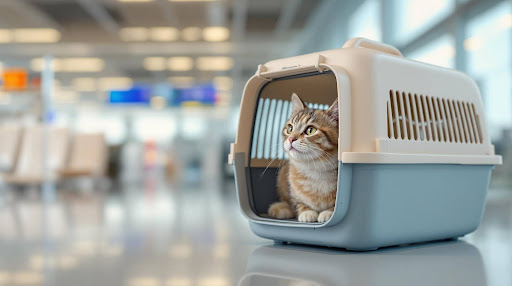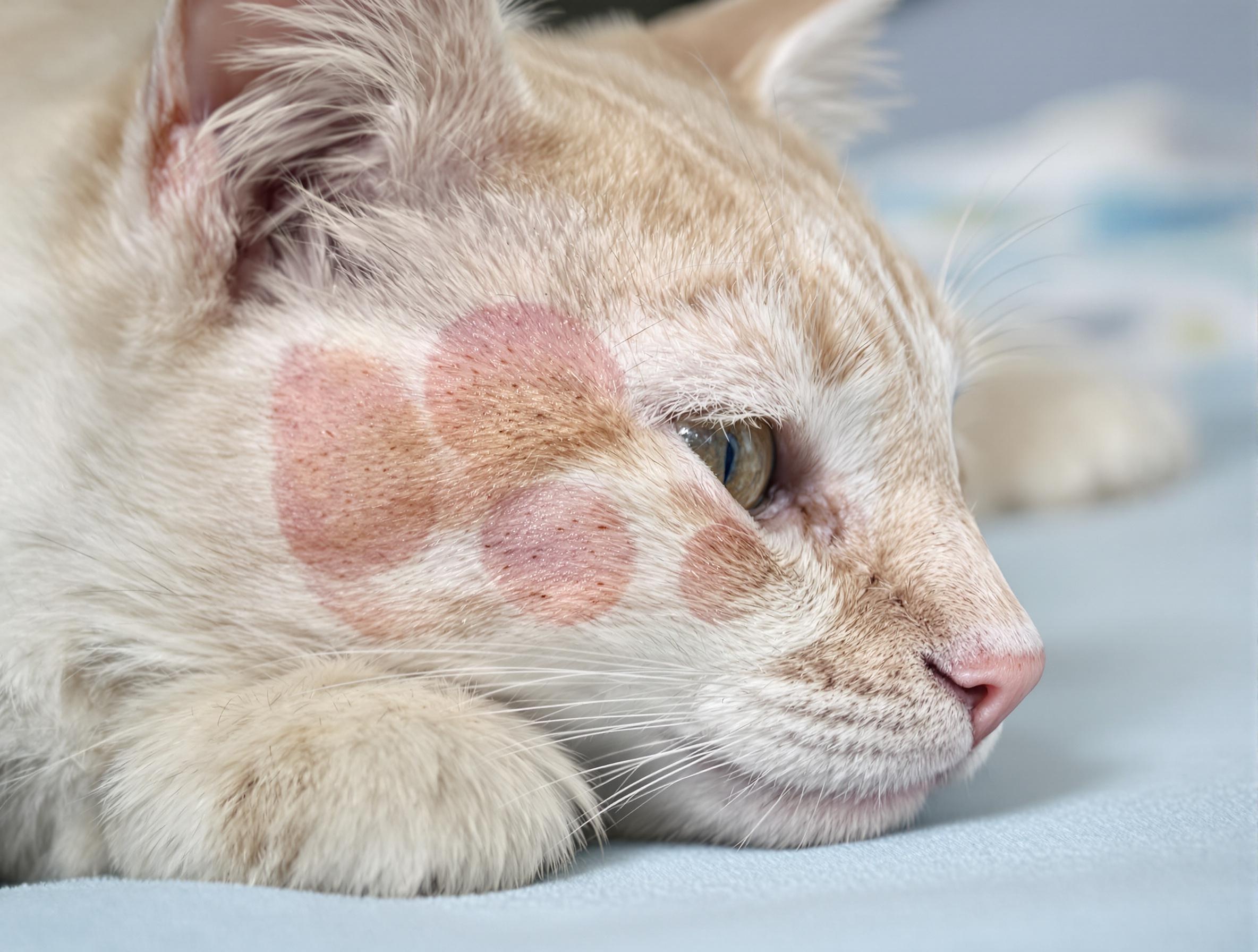
Key Takeaways
- Planning ahead—like reviewing airline policies and securing a cabin spot early—makes flying with your cat much more manageable.
- Getting your cat comfortable with their carrier before the trip helps reduce anxiety and makes travel day smoother.
- After the flight, set up a quiet space with familiar items and stick to your cat’s usual routine to help them adjust with less stress.
Flying with your cat doesn’t have to be a nerve-wracking experience—for either of you. Cats can get stressed during travel; some even deal with motion sickness like we do. But with a bit of thoughtful prep, you can make the trip much more comfortable and help your cat avoid those common in-flight woes.
The first step to a smoother flight is a comfy, well-sized carrier that lets your cat stand up and turn around easily. From choosing a pet-friendly airline to handling pre-flight prep, every little detail helps make the journey easier for both of you.
Navigating Airline Pet Travel Guidelines and Policies
Taking time to sort out the documents, reserve a cabin spot, and find the right carrier will help you and your cat feel more prepared. Planning with your vet and your airline makes it much easier to travel with confidence and comfort.
Confirm Health and Travel Documents
Start by checking in with your vet to make sure your cat has up-to-date vaccination records and a current health certificate. Many countries require that the certificate be issued within 10 days of arrival, but timelines and paperwork can vary depending on where you’re going. Your veterinarian can help you understand what’s needed and when to schedule your appointment.
For pet parents preparing for travel, it can help to stock up on cat health and wellness essentials before your trip.
Know the Rules for Your Destination
If you’re entering the United States, you might have heard about the CDC’s updated pet travel guidelines that took effect in August 2024. These changes apply only to dogs, not cats, but reading the fine print is still a good measure. Airlines and international destinations may have rules for feline travelers, so review the requirements for each stop on your route.
Call Ahead to Reserve a Cabin Spot
Most airlines allow cats in the cabin if they meet size and carrier requirements. That said, there’s usually a limit, typically just 2 to 4 pets per flight. Calling your airline at least two weeks before departure gives you the best chance to secure a spot for your cat and avoid last-minute surprises.
Choose a Carrier That Works for Everyone
Cabin-approved carriers must fit under the seat in front of you and allow your cat to stand, turn, and lie down comfortably. Most airlines prefer soft-sided carriers around 18″ x 11″ x 11″, but it’s smart to double-check your airline’s size limits before buying a new one or using one you already own. Explore a range of cat travel supplies designed for convenience and comfort.
Preparing Your Cat for a Flight
A few weeks of thoughtful prep can make a big difference in helping your cat feel calm and secure on travel day. Here’s how to ease your cat into the idea of flying—one simple step at a time.
Help Your Cat Feel at Home in the Carrier
Start by introducing the carrier well before your trip. Line it with soft blankets near your cat’s favorite hangout spots. Adding treats or toys can make it a cozy, familiar retreat.
Once your cat is comfortable going in and out, take short car rides with them in the carrier. Begin with five-minute trips around the block, then gradually work up to longer drives. This helps your cat get used to traveling while still in a safe, controlled environment.
Plan for Health and Safety
Schedule a visit with your veterinarian about 10 days before your flight. This allows time for a health check and any paperwork your destination requires. Your vet can also recommend calming strategies or products if your cat gets anxious during travel.
If you need help choosing calming products, browse trusted cat anxiety relief options that can make the experience easier.
Stick to Routine and Support Comfort
In the days before the trip, try to keep your cat’s schedule as consistent as possible. Regular feeding and playtime can offer a reassuring sense of normalcy during this unfamiliar experience.
For the flight itself, plan your cat’s last meal about 12 hours before takeoff. A light meal helps reduce the chances of motion sickness and keeps your cat more comfortable during travel.

Keeping Your Cat Calm During the Flight
Once you’ve made it to travel day, the focus shifts from preparation to keeping things steady and stress-free. A few simple choices can go a long way in helping your cat stay calm and comfortable during the flight.
Set the Mood Before You Leave
A couple of hours before heading to the airport, try playing soft classical music or white noise near your cat’s carrier. Familiar sounds can help create a consistent, comforting background throughout the trip.
About 30 minutes before departure, lightly mist a favorite blanket with a pheromone spray and place it in the carrier. These sprays mimic calming facial pheromones and may help your cat feel more at home.
Use a Calm Voice and Gentle Movements
Cats often take cues from your tone and body language, so your behavior plays a big role in how they experience the trip. Speak softly, keep your tone upbeat, and maintain gentle eye contact when needed. If you need to open the carrier during the journey, keep it brief and move slowly.
Staying calm yourself can make it easier for your cat to relax, too, so take a few deep breaths and try to keep your energy steady throughout the trip.
Pack for Comfort and Confidence
Having a small comfort kit on hand can help you manage anything unexpected. Include:
- Absorbent pads
- Pet-safe wet wipes
- A spare blanket
- Any natural calming aids recommended by your vet
If your flight is longer than three hours, consider placing a few treats in hidden spots inside the carrier. This simple form of enrichment gives your cat something positive to discover during quieter moments in the journey.
Post-Flight Care: Helping Your Cat Adjust After the Journey
Once you’ve arrived at your destination, a calm, familiar setup can make a big difference in helping your cat settle in.
Set Up a Quiet, Familiar Space
Prepare a cozy, draft-free room where your cat can decompress after the flight. Place their carrier against a wall with the door facing outward, ideally in a space between 70–75°F. Add familiar items nearby—like their favorite blanket, a toy they love, or even a worn T-shirt that smells like you.
Let Your Cat Set the Pace
Give your cat time and space to explore on their terms. Leave the carrier door open so they can come and go freely—it may continue to serve as a comforting hideaway for the first few days.
Set up their essentials—food, water, and a litter box—within easy reach but in separate areas of the room. Consistency is key, so stick to regular feeding, play, and grooming schedules just like you would at home.
Watch for Adjustment Cues
Your cat’s behavior can tell you a lot about how they’re coping with the transition. Watch for changes in appetite, grooming habits, or how social they seem.
If your cat shows signs of stress that last more than 48 hours—like hiding excessively or skipping meals—contact your veterinarian for guidance.
Frequently Asked Questions About Flying with Cats
How Can I Make Security Screening Less Stressful for My Cat?
Let the TSA agent know you’re traveling with a cat before you reach the screening area. Remove your cat from their carrier while they wear a secure harness and leash. If your cat is anxious, ask for a private screening room—many airports provide this option.
Should I Worry If My Cat Doesn’t Eat or Drink During the Flight?
It’s normal for cats to eat or drink less while traveling. Offer small amounts of water in a leak-proof container and tuck a few familiar-smelling treats into the carrier to encourage nibbling when your cat feels ready.
What’s the Best Way to Handle Long Layovers?
If you have a long layover, plan to give your cat a break. Many airports now have pet relief areas where your cat can relax safely. Find a quiet, low-traffic corner of the terminal away from loud noises and foot traffic.
Flying with Your Cat Can Be a Smooth Experience
Air travel with your cat can feel much more manageable when you know what to expect and have the right tools on hand. Small details—like choosing the right carrier, planning ahead for airport security, and helping your cat settle in after landing—can lead to a much smoother experience.
Your cat’s comfort matters every step of the way. Staying flexible, paying attention to their needs, and taking a calm approach will help you both travel with more ease.
For trusted supplies to make the trip easier, explore cat products at 1-800-PetMeds—your partner in stress-free travel for pets.





